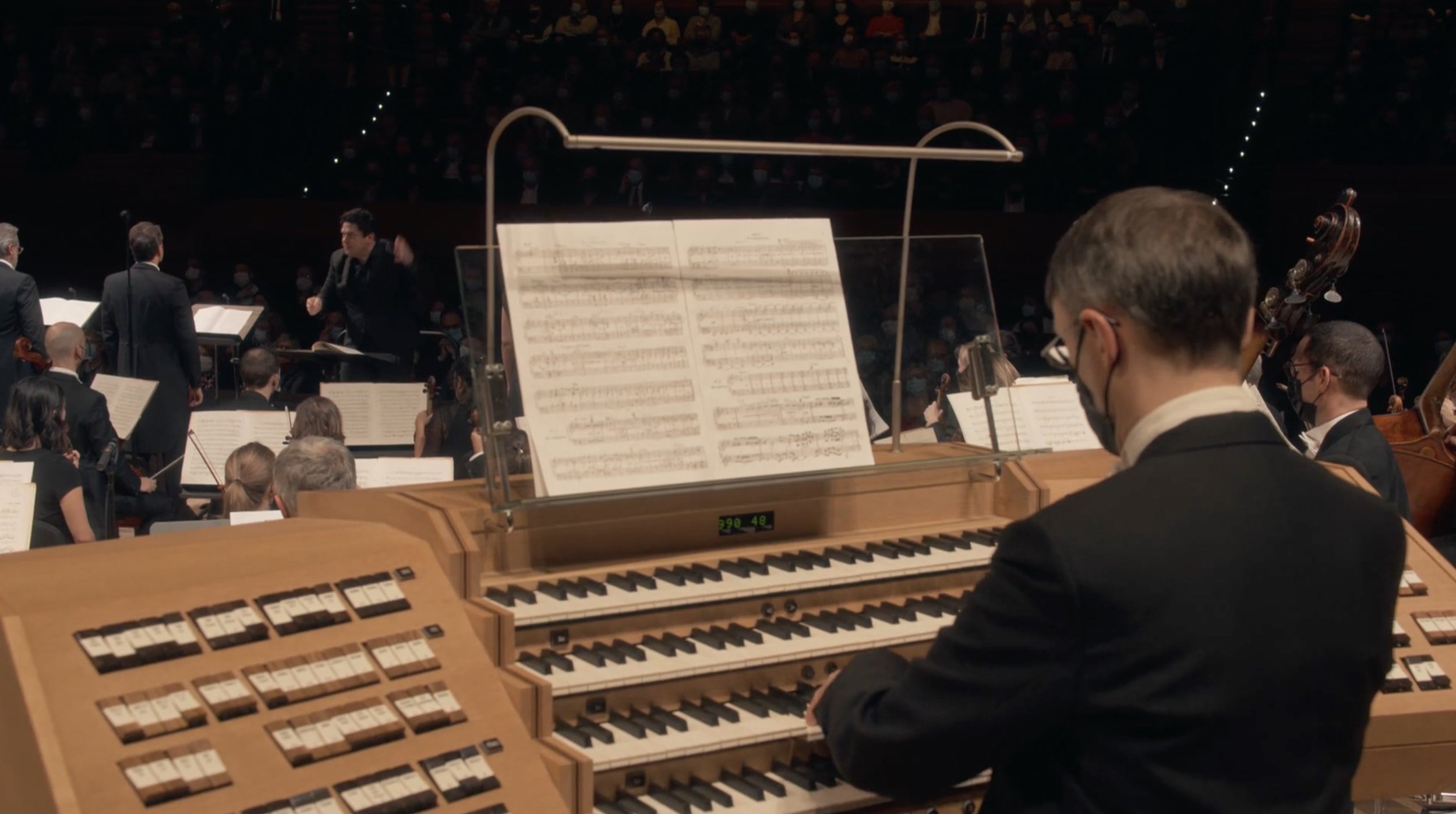Cristian Măcelaru and ONF praised for Saint-Saëns Anniversary concerts by Diapason
After Symphony No. 3 “Organ”, Cristian Măcelaru closes the celebrations of the hundredth anniversary of the death of Camille Saint-Saëns by conducting a Requiem well suited to the circumstances
The Orchestre National de France closes its Saint-Saëns cycle in style
By François Laurent
Diapason Magazine
December 16, 2021
Saint-Saëns, who was hardly of a very religious nature, satisfied, with his Requiem Mass (1878), the request of a generous patron and friend. Four harps to reinforce the seraphic aspect (skillfully pointed out by Cristian Măcelaru in the Benedictus ), no percussion but the great organ to give a glimpse of the crash of the last day in the Tuba mirum . The Kyrie and the Offertory exude a confidence, a serenity that Fauré will remember fifteen years later in his own Requiem . The strings of the National, to which the first violin Sarah Nemtanu gave a clear impetus, impressed by the relief of accents and nuances, in particular the sforzandos of Agnus Dei .
The choir, fan-shaped throughout the first balcony above the orchestra to respect sanitary distances, enveloped a high-level, homogeneous and perfectly balanced solo quartet: the soprano Véronique Gens , the mezzo Aliénor Feix, the tenor Julien Behr - who inherited the only real solo in the score ( Rex tremendae ) - and bass Nicolas Testé. Hopefully the record will immortalize such a beautiful poster, and correct the passage of menus hitches on the brass side ...
In terms of the Symphony No. 3 "Organ" (1886), given in the second part of the concert, the National Music Director and have already recorded for Erato in a wheel among the most significant of these last years. Here again, we applauded the transparency of the texture (the strings are not for nothing), the finesse of the details, the circulation of themes within the orchestra. The second section of the first movement even seemed more nuanced and above all “quiet” than in the disc, with a less invasive organ. If the finish is amazingly velocity (bravo to the flute stand!), Its impact is somewhat dampened by the muted and capped acoustics of the place: the organ, firmly held by Olivier Latry, crushes the sound there when it should instead give it an additional aura.
The Adagio from Symphony No. 2 - with its magnificent solo English horn - was an ideal bis, as brief as well drawn. A goodbye on tiptoe, the better to return, very quickly, to Saint-Saëns. Let’s not doubt it.
To read the full review, click here.

